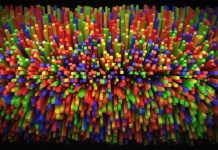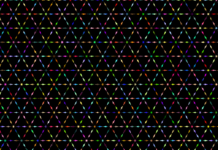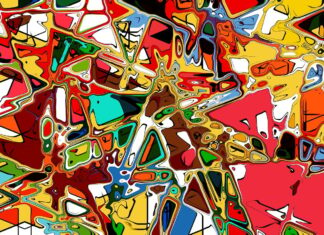MERN is a popular acronym that represents a JavaScript software stack used for building web applications. It consists of four key technologies: MongoDB, Express.js, React, and Node.js. MERN provides a comprehensive and efficient framework for developing full-stack applications, allowing developers to work with JavaScript throughout the entire development process. In this response, I will provide you with an overview of each component of the MERN stack and highlight ten important aspects that you need to know about MERN.
The “M” in MERN stands for MongoDB, a document-oriented NoSQL database that provides high scalability and flexibility. MongoDB stores data in JSON-like documents, allowing for easy integration with JavaScript-based applications. It offers powerful querying capabilities, automatic sharding for horizontal scaling, and robust replication for high availability.
The “E” in MERN stands for Express.js, a minimalistic and flexible web application framework for Node.js. Express.js simplifies the process of building web applications and APIs by providing a set of robust features and tools. It allows developers to define routes, handle HTTP requests and responses, implement middleware for additional functionality, and much more.
The “R” in MERN stands for React, a widely-used JavaScript library for building user interfaces. React follows a component-based architecture, enabling developers to create reusable UI components. It offers a virtual DOM (Document Object Model) that enhances performance by efficiently updating only the necessary parts of the user interface. React’s declarative syntax and efficient rendering make it a popular choice for building interactive and responsive web applications.
The second “N” in MERN stands for Node.js, a server-side JavaScript runtime environment. Node.js enables developers to execute JavaScript code outside the browser, making it possible to build server-side applications with JavaScript. It provides an event-driven, non-blocking I/O model, which makes it highly scalable and efficient for handling concurrent requests. Node.js also offers a vast ecosystem of modules and packages through npm (Node Package Manager).
Now that we have covered the basics of the MERN stack, let’s delve into ten important things you should know about MERN:
1. Full-stack JavaScript Development: MERN allows you to develop both the front-end and back-end of your application using JavaScript, which offers numerous advantages such as code reusability, a consistent development environment, and a unified language for the entire project.
2. Rapid Prototyping: MERN provides a streamlined development process with its extensive set of tools and libraries. It enables rapid prototyping, allowing developers to quickly create and iterate on their ideas, reducing time to market.
3. Scalability: MongoDB’s flexible schema and horizontal scaling capabilities make it well-suited for handling large amounts of data. Combined with Node.js’ event-driven architecture, MERN applications can easily scale to accommodate high traffic and demanding workloads.
4. Single Page Applications (SPA): React’s component-based architecture and virtual DOM make it ideal for building SPAs. SPAs provide a seamless user experience by loading a single HTML page and dynamically updating the content using JavaScript, resulting in faster page transitions and reduced server load.
5. RESTful APIs: Express.js simplifies the creation of RESTful APIs by providing an intuitive routing system and middleware support. With MERN, you can effortlessly build a robust back-end to handle API requests and interact with the database.
6. Real-time Applications: MERN can be extended to build real-time applications using technologies such as WebSockets or libraries like Socket.IO. This enables real-time data synchronization and communication between clients and servers, making MERN suitable for chat applications, collaborative tools, and more.
7. Rich Ecosystem: The MERN stack benefits from the vast JavaScript ecosystem. React has a thriving community with numerous third-party libraries and components available through npm. Additionally, Node.js provides access to a wide range of modules and packages, allowing developers to leverage existing solutions for various tasks.
8. Code Reusability: With React, you can create reusable UI components, enhancing code maintainability and reducing development time. These components can be easily shared across different parts of the application, resulting in more efficient and scalable codebases.
9. Developer Productivity: MERN’s combination of MongoDB, Express.js, React, and Node.js streamlines the development process, making it faster and more efficient. Developers familiar with JavaScript can seamlessly transition between the different components, resulting in improved productivity and reduced learning curves.
10. Community Support and Learning Resources: MERN benefits from a large and active community of developers who regularly contribute to open-source projects, share knowledge, and provide support. There are numerous online tutorials, documentation, and forums available, making it easier to learn and troubleshoot MERN-related issues.
The MERN stack offers a powerful and versatile set of technologies for building modern web applications. It enables full-stack JavaScript development, rapid prototyping, scalability, and the creation of SPAs and RESTful APIs. With MERN, you can build real-time applications, leverage the rich JavaScript ecosystem, and enhance code reusability. MERN’s streamlined development process and extensive community support contribute to improved developer productivity and a wealth of learning resources.
The MERN stack offers a comprehensive and efficient framework for building web applications, encompassing MongoDB, Express.js, React, and Node.js. MongoDB, the “M” in MERN, is a flexible NoSQL database that stores data in JSON-like documents, providing scalability and powerful querying capabilities. Express.js, the “E” in MERN, is a minimalist web application framework for Node.js that simplifies the development of web applications and APIs. React, the “R” in MERN, is a popular JavaScript library for building user interfaces with its component-based architecture and efficient rendering. Lastly, Node.js, the second “N” in MERN, is a server-side JavaScript runtime environment that enables executing JavaScript code outside the browser, facilitating the development of server-side applications.
Now, let’s explore ten important aspects of the MERN stack. First, MERN enables full-stack JavaScript development, allowing developers to work with a unified language throughout the entire development process, promoting code reusability and a consistent development environment. Second, the MERN stack facilitates rapid prototyping with its extensive set of tools and libraries, empowering developers to quickly bring their ideas to life and iterate on them efficiently. Third, MERN applications are highly scalable, thanks to MongoDB’s flexible schema and horizontal scaling capabilities, combined with Node.js’ event-driven architecture, enabling the handling of large amounts of data and high traffic.
Fourth, MERN is well-suited for building Single Page Applications (SPAs) due to React’s component-based architecture and virtual DOM. SPAs provide a seamless user experience by loading a single HTML page and dynamically updating the content using JavaScript, resulting in faster page transitions and reduced server load. Fifth, Express.js simplifies the creation of RESTful APIs, providing an intuitive routing system and middleware support, making it easier to build a robust back-end that handles API requests and interacts with the database.
Sixth, MERN can be extended to build real-time applications using technologies like WebSockets or libraries such as Socket.IO. This enables real-time data synchronization and communication between clients and servers, making MERN suitable for chat applications, collaborative tools, and more. Seventh, the MERN stack benefits from the vast JavaScript ecosystem, with React’s thriving community offering numerous third-party libraries and components available through npm. Additionally, Node.js provides access to a wide range of modules and packages, allowing developers to leverage existing solutions for various tasks.
Eighth, React’s component-based architecture promotes code reusability, allowing developers to create reusable UI components that can be easily shared across different parts of the application. This enhances code maintainability, reduces development time, and contributes to more efficient and scalable codebases. Ninth, the MERN stack enhances developer productivity by streamlining the development process. Developers familiar with JavaScript can seamlessly transition between MongoDB, Express.js, React, and Node.js, resulting in improved efficiency and reduced learning curves.
Lastly, the MERN stack benefits from a large and active community of developers who contribute to open-source projects, share knowledge, and provide support. This vibrant community ensures that developers have access to a wealth of learning resources, including online tutorials, documentation, and forums, making it easier to learn and troubleshoot MERN-related issues.
In conclusion, the MERN stack offers a powerful and versatile set of technologies for building modern web applications. MongoDB, Express.js, React, and Node.js work together seamlessly, enabling full-stack JavaScript development, rapid prototyping, scalability, and the creation of SPAs and RESTful APIs. The stack supports real-time applications, leverages the rich JavaScript ecosystem, enhances code reusability, and boosts developer productivity. With MERN, developers can take advantage of a streamlined development process and a supportive community, ensuring efficient and successful application development.






















